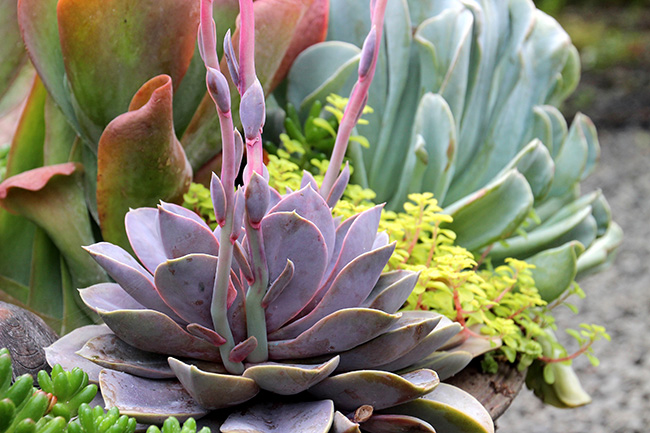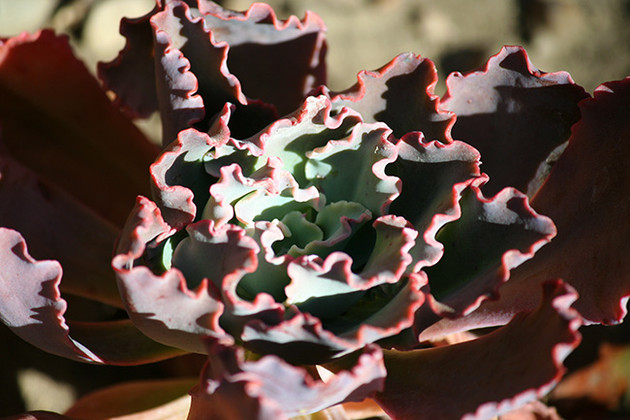Echeveria Care Guide
Feb 20th 2013
We were recently asked a series of questions by a customer about growing Echeveria indoors during the winter. So, we thought we’d post the information shared to hopefully help others. We were specifically discussing Echeveria, but it applies to all tender succulents.
Climate
Echeveria and other non-hardy succulents look amazing in patio planters. Echeveria are originally from Mexico and Central America. They aren’t used to the cold and will die in freezing temperatures. Just because you live where winter is a real winter doesn’t mean that you can’t enjoy these colorful plants.
You can keep them healthy during the cold months by moving them indoors. Then, once the threat of frost has past, gradually move them back outside in the spring. Other people who want to enjoy these colorful plants, but don’t want houseplants, treat Echeveria like annuals and just plant anew each spring.
Light
Like they’re used to in their native growing grounds, Echeveria like full sun. However, try to avoid these two things: drastic sunlight changes and summer afternoon full sun.
Dramatic changes in lighting can stress plants out. If you are moving your plants outside in the spring, do it gradually. A couple hours in morning sun, then a few more, until they are in full sun.
Intense afternoon sun can, in some regions be too strong and the leaves will sunburn. Burned leaves will not heal and since Echeveria keep their leaves for a long time, it will look burned for a long time. If the damage is severe you will be best off to cut the head off the plant and let it re-grow from the stalk.
During the winter, when your plants are inside, put them near the brightest window in your house. Your plants will stretch if they don’t have enough sunlight. Ideally you would put your plants near a south-facing window. If that isn’t an option, though, put them near a window that gets the most light.
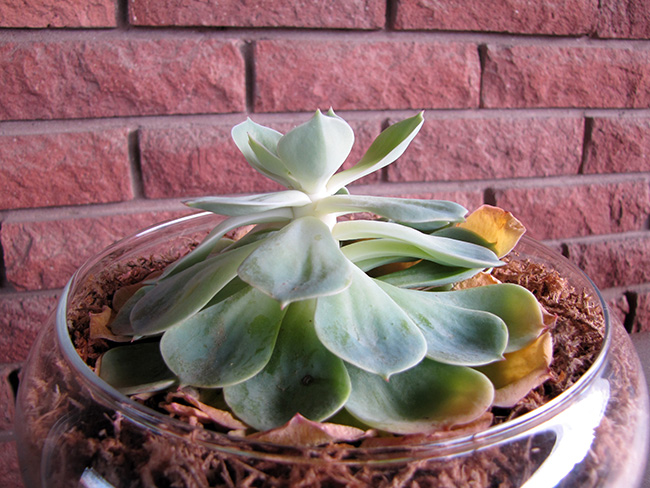
Water
Echeveria, indoors or outside, don’t like to be kept too wet, but they also don’t like to be kept too dry. We typically find that succulents like more water than most people think. In a house the dry home temperatures dry things our even faster. You don’t want your soil to be bone dry or it will wither the plant’s roots.
When you water Echeveria, water the soil and not the rosette. Pour on the water until it drains out the bottom. Repeat this a couple times. Then don’t water again until the soil has dried out. You don’t want your plant to remain soaking wet all the time. To help prevent this, don’t let the pot sit in a saucer full of water. The time between watering depends on the temperatures and conditions of the plant.
The most common problems seen on Echeveria are due to poor watering habits. Over and under watering can both produce similar symptoms. Wilting, shriveling, dropping leaves. You know your own watering habits best. Keep an eye on your plants and make adjustments if needed.
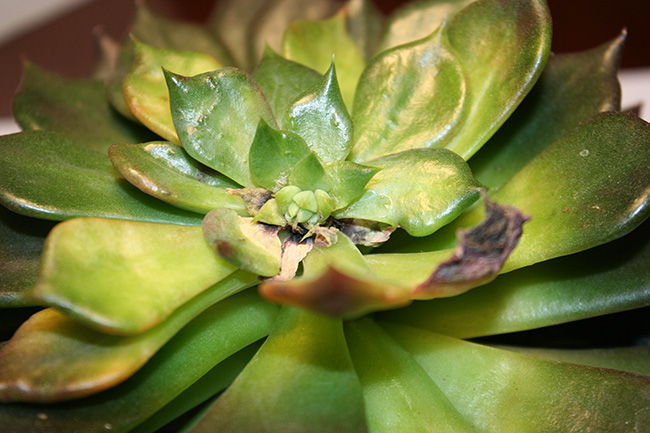
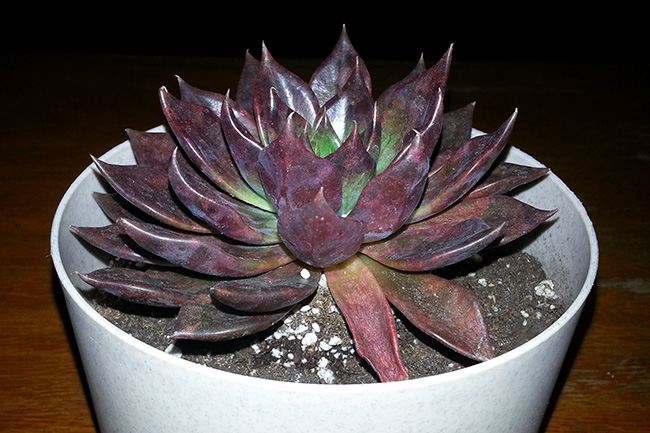
Soil
Like all succulents, Echeveria need soil that drains quickly. This helps prevent moisture from rotting the roots. Many growers will create their own special mixture of soil and perlite. However, good quality potting soil, or a cactus mix will work fine. As a rule of thumb, when you squeeze a handful of moist soil together, it should crumble apart again when released.
You will often read “sandy” in the soil requirements for succulents. This simply means that the soil needs to drain well. If you do add actual sand to your soil, make sure that it is coarse grained. Fine sand will clog the air pockets in the soil.
If you keep your plants alive for several years, you will want to re-pot them. Getting a fresh change of soil every couple years will keep them healthy and growing well.
Fertilizer
Fertilizer is not a continual requirement for Echeveria. Succulents grow natively in soil without a lot of nutrients. So, they are especially susceptible to fertilizer burn. However, they can benefit from the occasional extra boost. Use a slow-release fertilizer at the beginning of spring, or a liquid fertilizer diluted 2-4 times more than normal and used less often than recommended. Use a low nitrogen mix or a cactus fertilizer. Remember that it is a lot easier to over-fertilize succulents than to under-fertilize.
Containers
When you pot up you Echeveria, you have a wide range of containers to choose from. Generally the smallest size possible, or something that is just bigger than the root ball is the right choice. People sometimes worry about overpotting. This is when you use a large container for a small plant. The potential problem is that greater soil volume can hold more moisture and lead to the risk of rot. However, the soil you use with succulents should have excellent drainage anyway and larger pots shouldn’t pose any problem. So, find the container that you think looks great, small or large, and let your Echeveria grow.
